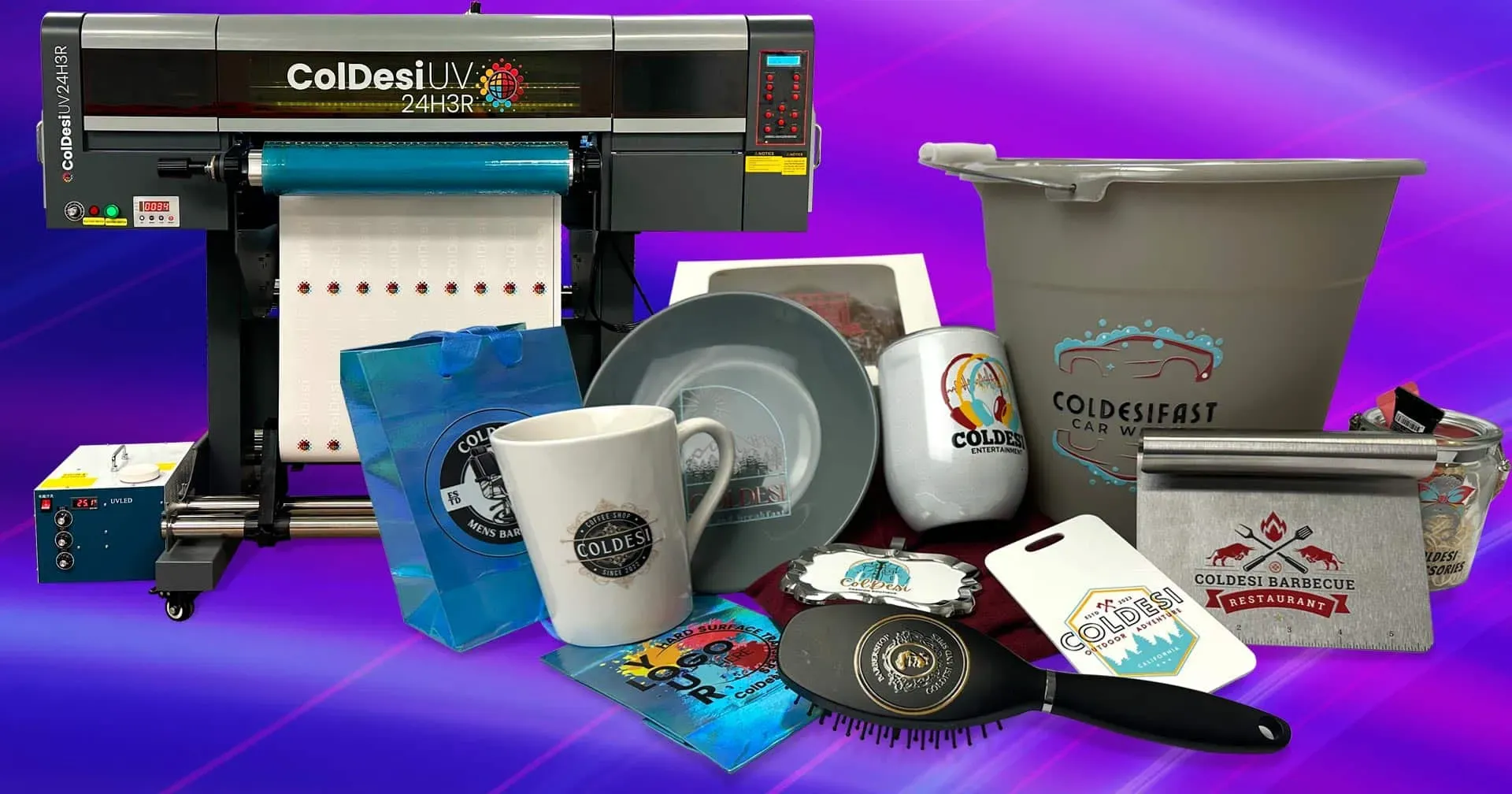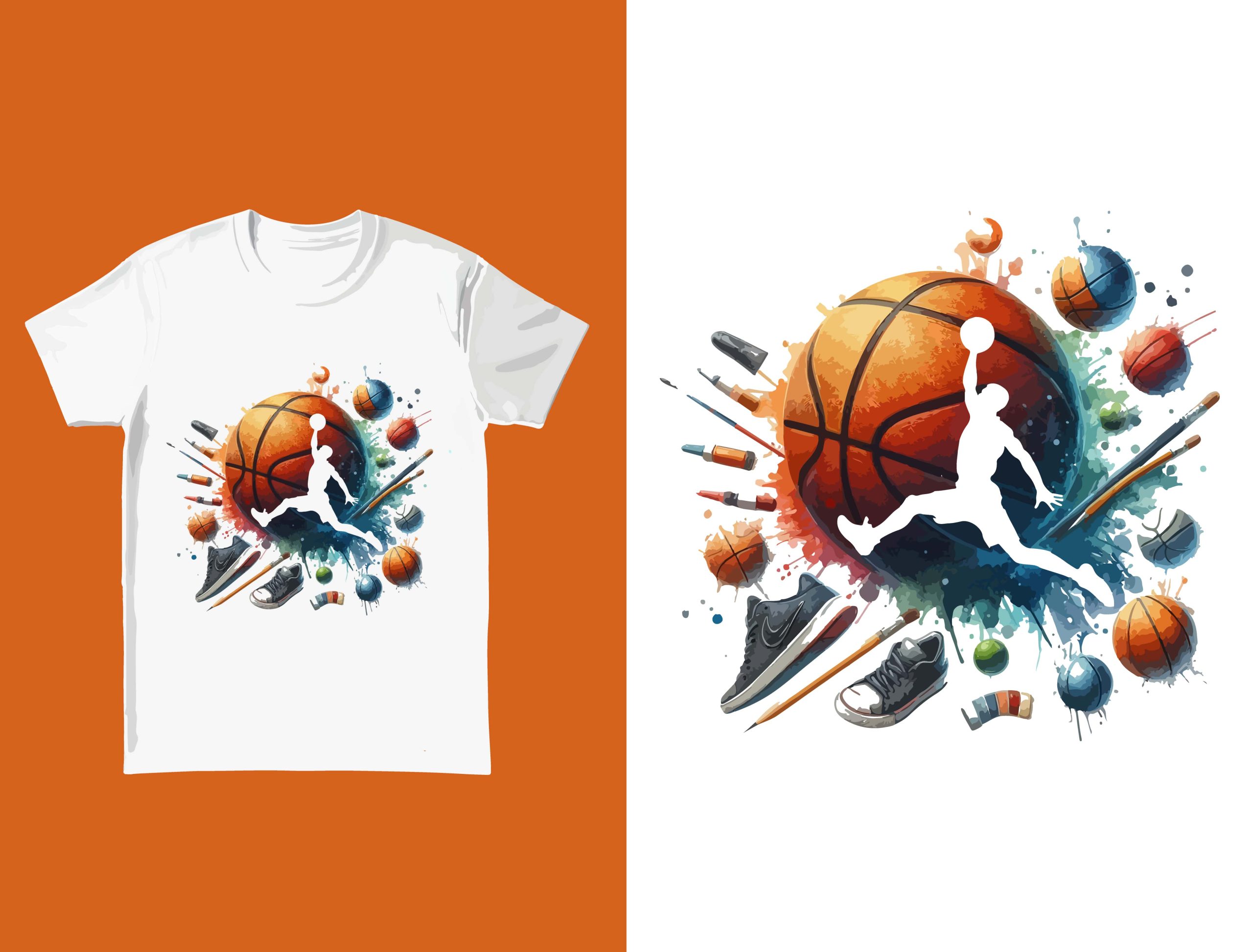UV DTF: Understanding Its Science and Importance
In the ever-evolving realm of printing technology, UV DTF (Ultra Violet Direct-to-Film) has emerged as a revolutionary force enabling high-quality prints across various substrates. This innovative printing technique blends traditional methods with state-of-the-art Direct-to-Film technology, allowing for exceptional detail and color vibrancy. Businesses in the apparel and promotional products sectors can greatly benefit from UV DTF printing, as it offers durability, versatility, and cost efficiency for custom printing solutions. As we delve into the nuances of the UV printing process, we will uncover how it not only enhances the aesthetics of products but also reshapes branding strategies. Join us on this journey to explore the science behind UV DTF and its significant impact on modern printing practices.
Within the modern printing landscape, the technology known as Ultra Violet Direct-to-Film (UV DTF) has gained traction for its advanced capabilities. Often referred to simply as DTF printing, this method utilizes a unique film transfer approach that yields high-resolution images and impactful designs. From custom graphics on clothing to vibrant prints on various materials, the benefits of UV DTF are wide-ranging and significant. This printing process leverages the cutting-edge characteristics of UV inks to facilitate remarkable color accuracy and durability. Understanding how this innovative technology operates will illuminate its growing importance in diverse sectors, including fashion, marketing, and promotional items.
The Mechanism of UV DTF Printing Technology
The mechanism of UV DTF (Direct-to-Film) printing technology involves a multi-step process that harnesses the power of ultraviolet light to cure inks on film. This starts with the design preparation, where graphic artists utilize software to create detailed digital designs. Afterward, these designs are printed onto specially coated transfer films using UV-curable inks, which are unique due to their rapid drying and curing properties when exposed to ultraviolet light. This immediate curing ensures that the ink adheres firmly to the film, allowing for precise and vibrant graphics that maintain their integrity.
Following the printing phase, the film undergoes a heat transfer process where it is applied to various substrates. The heat activates the adhesive properties of the ink, allowing it to bond securely to surfaces such as fabrics, ceramics, or metals. This innovative approach not only enhances production efficiency but also maintains high color vibrancy across different materials, making it a versatile choice for a wide range of applications.
Exploring the Benefits of UV DTF Printing
UV DTF printing offers numerous benefits that make it a preferred choice for custom printing solutions in various industries. One of its standout features is versatility, as this printing method can effectively apply designs onto various substrates, including textiles, wood, glass, and metal. This opens up opportunities for businesses to expand their product offerings significantly, allowing them to cater to diverse customer needs, whether it’s custom apparel or promotional merchandise.
In addition to versatility, the durability of prints produced through UV DTF technology is noteworthy. The ultraviolet curing process not only provides strong adhesion but also results in prints that resist fading, scratching, and environmental damage. Consequently, businesses can expect their products to withstand the test of time, thereby providing better value to customers and enhancing brand quality perceptions based on longevity.
Applications of UV DTF in Custom Printing Solutions
The applications of UV DTF printing technology are expansive, making it an adaptable solution for various sectors. In the apparel industry, for instance, brands can deploy UV DTF to create intricate, high-quality designs on garments. This capability allows apparel companies to offer bespoke products without significant production delays, enabling them to meet fast fashion demands. Moreover, unique and eye-catching designs produced through UV DTF can help differentiate brands in a crowded marketplace, driving consumer interest and sales.
Beyond apparel, UV DTF is increasingly employed in promotional products. Businesses utilize this technology to print logos and vibrant images on items such as mugs, tote bags, and corporate gifts. The durability offered by UV-curable inks ensures these promotional products remain visually appealing over time, enhancing brand visibility and recall. This versatility in application is what makes UV DTF an ideal printing choice for companies looking to innovate and engage with their clientele through custom merchandise.
The Eco-Friendly Future of UV DTF Printing
Sustainability is a growing concern in the printing industry, and UV DTF technology presents eco-friendly benefits that align with modern consumer values. Many manufacturers are now focusing on creating UV inks that are environmentally friendly, minimizing harmful emissions typically associated with traditional solvent-based inks. As a result, utilizing UV DTF can significantly reduce the carbon footprint of printing operations, appealing to businesses that prioritize sustainability in their branding narratives.
Furthermore, UV DTF printing allows for on-demand production, which reduces waste associated with inventory and excess materials. This efficiency in production means businesses can respond to market demands without the risk of overproducing items that may not sell. The eco-friendly nature of UV DTF not only supports environmental efforts but also attracts consumers who are increasingly looking for brands that commit to sustainable practices in their operations.
Comparing UV DTF to Traditional Printing Methods
When comparing UV DTF printing to traditional printing methods like screen printing or heat transfer, several advantages emerge that make UV DTF an attractive option. Traditional printing often involves multiple steps that can be time-consuming and resource-intensive, especially when handling multiple colors and designs. Conversely, UV DTF streamlines this process, utilizing direct printing onto film followed by a straightforward transfer application, allowing for faster production times and reduced setup costs.
Moreover, UV DTF delivers superior print quality, providing high-resolution images with rich colors and intricate details. Traditional methods may struggle with intricacy, particularly when it comes to fine designs or multi-layered graphics. Businesses aiming for a high-quality finish and vibrant designs are likely to find UV DTF a more effective and appealing option for fulfilling their printing needs.
The Role of UV DTF in Modern Marketing Strategies
In the context of modern marketing strategies, UV DTF plays a pivotal role in enabling businesses to offer customized products that align with customer preferences. With today’s consumers increasingly seeking personalization, brands that adopt UV DTF technology can deliver unique items tailored to individual tastes or promotional events. This customization not only enhances the consumer experience but also fosters brand loyalty as customers associate meaningful and personalized products with the brand.
Additionally, the flexibility and high-quality output of UV DTF allows marketing teams to create impactful promotional materials that stand out. Whether it’s customized apparel for events or promotional items for marketing campaigns, the ability to produce eye-catching and durable printed goods reinforces brand messaging effectively. In this way, UV DTF not only offers functional advantages but also empowers businesses to better connect with their target audience through creativity and innovation.
Frequently Asked Questions
What is UV DTF printing and how does it work?
UV DTF printing, or Ultra Violet Direct-to-Film printing, is an innovative printing process where designs are printed onto a special transfer film using UV inks. These inks are cured with ultraviolet light, ensuring strong adhesion and vibrant colors. Once printed, the film can be transferred onto various substrates, including textiles and ceramics.
What are the benefits of UV DTF technology over traditional printing methods?
The benefits of UV DTF technology include superior color vibrancy, exceptional durability against wear and tear, versatility on multiple surfaces, eco-friendly ink options, and cost-effective small batch production. This makes UV DTF printing an attractive choice for businesses in need of high-quality custom printing solutions.
Can UV DTF printing be used for various materials?
Yes, UV DTF printing is highly versatile and can be used on a wide range of materials including textiles like cotton and polyester, as well as non-textile surfaces such as wood and metal, making it suitable for diverse custom printing applications.
How does the UV printing process affect ink durability?
The UV printing process significantly enhances ink durability. During printing, the UV inks are cured with ultraviolet light, which chemically bonds the ink to the substrate, resulting in prints that are resistant to scratching, fading, and environmental damage, surpassing the longevity of traditional inks.
What are some common applications for UV DTF printing?
Common applications for UV DTF printing include custom apparel like t-shirts and hats, promotional products such as mugs and bags, personalized gifts, and labeling for industrial products. Its versatility allows it to meet various printing needs in the market.
Why should businesses consider UV DTF for custom printing solutions?
Businesses should consider UV DTF for custom printing solutions because it offers vibrant, durable prints, quick turnaround for small batch orders, and the potential for eco-friendly ink options. This technology meets modern consumer demands for quality and customization while maintaining an environmentally conscious approach.
| Key Concept | Description |
|---|---|
| What is UV DTF? | UV DTF stands for Ultra Violet Direct-to-Film printing, a method that prints designs onto a special film using UV inks and cures them with ultraviolet light. |
| Process of UV DTF | Involves design preparation, film printing with UV inks, applying the film to a substrate using heat, and final UV curing for durability. |
| Key Benefits | Includes versatility on various surfaces, print durability, vibrant colors, cost-effectiveness for small batches, and eco-friendly options. |
| Applications | Used in apparel, promotional products, personalized goods, and industrial labeling. |
Summary
UV DTF printing represents a revolutionary development in printing technology, combining cutting-edge techniques with traditional processes. This innovative method is transforming how businesses in the apparel and promotional products space approach design and production. With its ability to produce vibrant, durable prints on a wide range of surfaces while offering eco-friendly options, UV DTF not only meets contemporary market demands for quality and customization but also provides a sustainable alternative to traditional printing methods. As companies continue to seek ways to differentiate their offerings and resonate with customers, understanding and adopting UV DTF technology will be crucial for maintaining a competitive edge.







